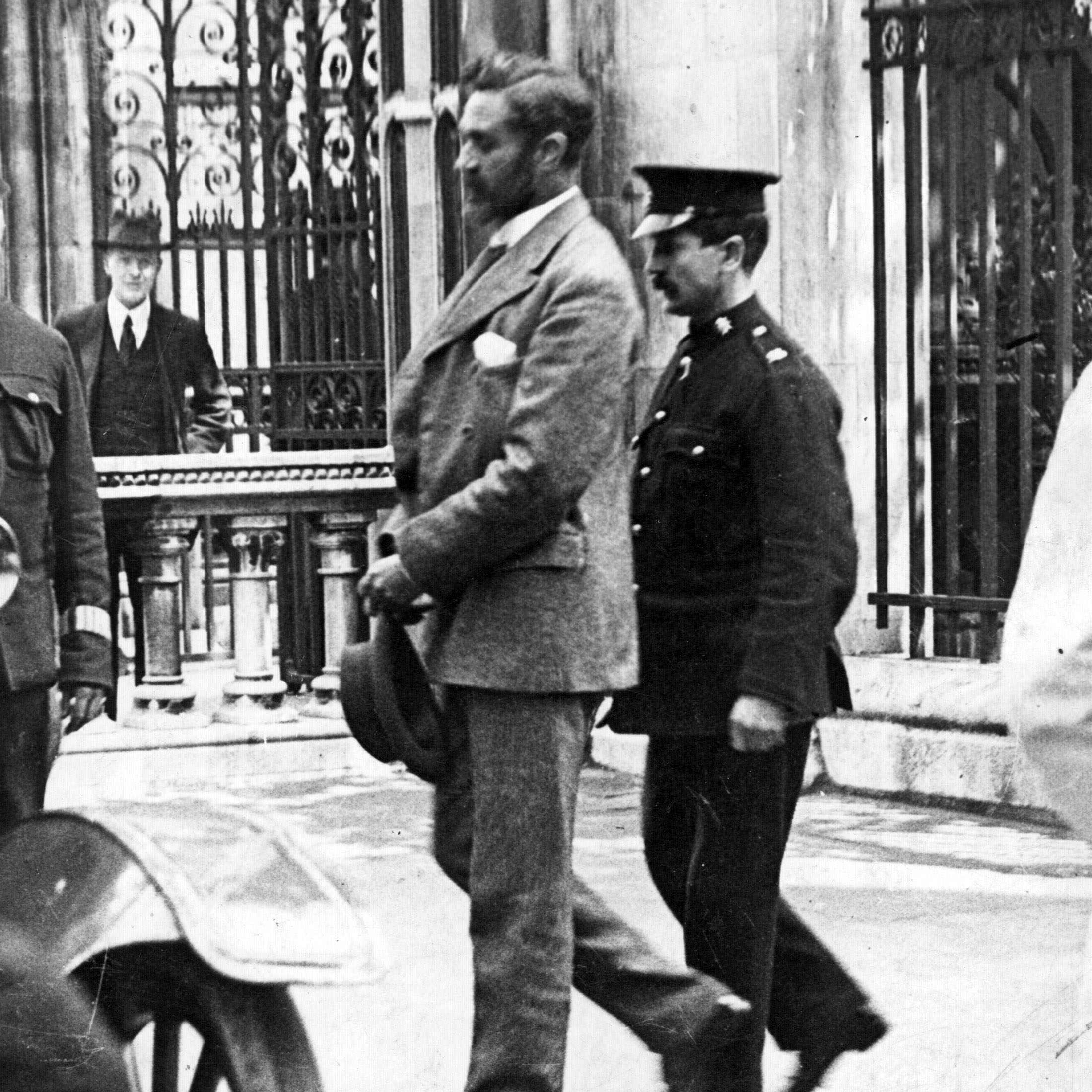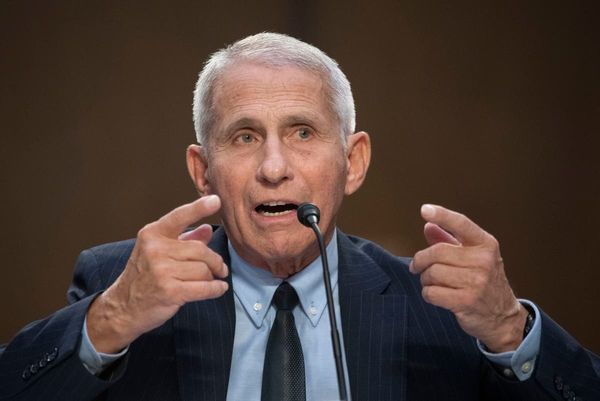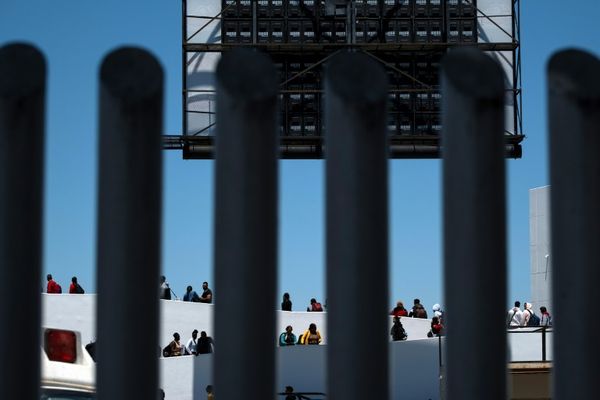
Of all the men associated with Ireland’s Easter Rising of 1916, the one who has turned out to be most written about is Roger Casement. This would surprise his contemporaries, for he was not directly involved in that event in Dublin. Moreover, he was soon reviled by many who knew him, including Irish nationalists.
Casement, who was not far short of two metres in height, was handsome and athletic, spoke with a musical voice, and projected a powerful personality. But much of it was outward show: he was marked by contradictions and ambivalences. As Roland Philipps shows us in his new biography, Broken Archangel, he started out believing Ireland was an integral part of the United Kingdom, but became a militant nationalist; served the British government abroad, and was twice decorated, yet defected to Germany during the first world war; was courteous, apparently honest and open, but also homosexually active (then totally taboo). He was also brought up Protestant but would convert to Catholicism when faced with death. His first Holy Communion was followed by receiving the Last Rites.
That a man with a Protestant background should become so involved in the Irish struggle for independence should not surprise us. It is often overlooked — since Ulster can be thought of as caging Protestantism — that many of the leading figures advancing the cause of Irish independence were Protestant. These include Charles Stewart Parnell, the great advocate of Home Rule, and Wolfe Tone, the leader of the rebellion of 1798. More broadly, while James Joyce was brought up Catholic, W.B. Yeats was not. Nor was George Bernard Shaw, nor Oscar Wilde. (Indeed Wilde’s activist mother, a poet, was a fiery nationalist.) To the list we can add John Mitchel, a leading member of Young Ireland, whose Jail Journal contains wonderful descriptions of Tasmania.
Orphaned at an early age and poorly educated, Casement was eager to encounter the wider world. His first job, with a shipping company, took him to the Congo. When he arrived there in 1883 at the age of nineteen, he would encounter colonialism at its rawest.
Leopold II, King of the Belgians, was envious of the colonial empires of other nations (and relatives). He had looked into buying Fiji, and the Philippines, and now turned his attention to Africa. He convened a conference of explorers and geographers, steered them towards establishing the International African Association, and pointed to blank spaces on the map where “hospitable, scientific and pacification bases” could be set up. Forming a tighter organisation with himself as proprietor, Leopold employed H.M. Stanley (he who found Livingstone) to begin subduing the Congo. Stanley’s expedition advanced, offering local chiefs “rent” for their land in brass rods, cloth, knives and loincloths.
The German chancellor Otto von Bismarck meanwhile convened a conference in Berlin to divide large parts of Africa among the European powers: lightweight Belgium was not invited. But the wily Leopold played on great-power rivalries. Lobbying intensely with promises of free trade and prosperity for all (including Africans, since slavery would be stamped out) Leopold was designated King-Sovereign of the Congo Free State.
The twenty-one-year-old Casement, already on site, got caught up in this enterprise, managing a base camp at the mouth of the Congo river. It was an episode he would later gloss over, for he was soon made aware of the brutality of Leopold’s project. One white man would pay his black soldiers five brass rods for every human head they brought in. The thousands of porters needed to carry the agents’ supplies were beaten mercilessly, to the point where, of the 300 conscripted for one expedition, not a single man survived.
Later it would become worse, as Leopold stepped up the extraction of rubber and ivory from what was in effect his private estate. For not meeting their quotas of rubber, people would have an arm or a hand chopped off. Worked to death or slaughtered outright, very many Congolese died: estimates ran as high as eight to ten million in a little more than twenty years. The king and his cohort calmly took their profits: between 1890 and 1904, Congo rubber earnings increased by a multiple of ninety-six.
Meanwhile, Casement had joined the British Foreign Office — with which he would remain until 1913 — serving as consul in a number of posts in Africa. He was still very much a believer in Empire, castigating the Boers in their war with Britain for setting up an Irish Brigade (which he would later emulate). Before taking up a consular post in Central Africa he visited Leopold in Brussels, and raised the harsh treatment of Africans with the king. Why not pay and then tax the Congolese, instead of imposing forced labour? It was “labour in lieu of tax,” the king replied bluntly.
By 1902 Casement was becoming more and more outspoken in his despatches to London: Leopold would have to be tackled head on. Given increased parliamentary pressure, the Conservative government was prompted to act, and instructed Casement to go on a fact-finding mission. Early on he was surprised to find the Congo “a desert — no natives left.” Wherever he went, there was desolation. Things were worsened by the Free State authorities’ insistence (through their dreaded African police) on district quotas being met, despite there being fewer able-bodied people on hand to meet them.
Aware that the Congolese were voiceless, and that he found himself cast as their spokesman, Casement described their piteous condition repeatedly. Some in the Foreign Office were disposed to regard him as tired and emotional, but the foreign secretary declared that even “making every allowance for the strength of his feelings, these papers are a terrible indictment.” Brought back to Britain to compile his special report, Casement produced the 50,000-word document in a week. The Foreign Office was surprised by its understated tone, which extended to Casement’s estimate that Leopold’s men had killed three million.
‘The public reaction was mixed at first, while Leopold was prompted to mount a counter-campaign, extending to whitewash pamphlets being placed in railway sleeping cars. But a Congo Reform Association was established, and even Leopold was compelled to set up an inquiry. Things accelerated once American opinion mobilised, helped along by Mark Twain publishing King Leopold’s Soliloquy. In 1908 the king would be obliged to transfer the Congo to the Belgian state — which meant supervision — while Casement would be decorated for his efforts. In the meantime he increasingly despaired of his employers. Suffering from recurrent health and financial problems, he took leave and turned to Ireland more and more.
He was rebuilding himself. An orphan since the age of twelve, Casement’s disjointed upbringing had left him, as Philipps puts it, “emotionally hollow and with a carapace of withdrawn self-sufficiency.” Increasingly he found that Ireland itself was in need of rebuilding. The language was so far gone that even his headmaster, who had published translations into Irish, presided over a school where the very word “Ireland” was never mentioned.
Casement now began to support the Irish-language movement, revive an Antrim bardic festival, and join the independence activists Sinn Féin. There was some similarity, he began to feel, between the oppression of the Congolese and the state of Ireland: colonial landlessness was at the heart of it. (As an Irishwoman once remarked, the English took everything except the scenery.)
Casement’s next three diplomatic postings were in Brazil. Increasingly he heard stories of the “universal subjection” of the Indians of the headwaters of the Amazon to secure greater rubber production. There a Peruvian had — Leopold-like — secured a concession when (not long before) slavery was still legal in Brazil, and ran the Putumayo accordingly. But the company concerned was registered in London, and relied on British investment.
Pressure built up for a commission, with Casement once again to the fore: the brutalities they discovered make grim reading. Progress was slow; Britain could exercise little direct influence in Latin America. But with the publication of the commission’s report, Casement became a household name. A papal encyclical enjoined greater humanity in dealing with the Indians. Casement — now Sir Roger — was recognised as the greatest humanitarian of the day.
But the Irish question was nearest his heart: “A people lost in the Middle Ages,” he wrote, should be “found and returned to Europe.” Having retired from the Foreign Office on a generous pension, he devoted himself to the cause. Conservative opposition to Home Rule for Ireland — a limited devolution of power — had intensified after a bill approving it was introduced to the British parliament in 1912. The Ulster Protestants began to drill, then arm, with the connivance of leading Conservatives.
For his part, Casement was involved in setting up the counter Irish Volunteers, extending to gun-running. Increasingly he stumped the country — and later America — making fiery speeches. With the outbreak of the first world war, the Home Rule act was passed but immediately suspended. Seeing Germany as a possible ally for the nationalist cause, Casement became intent on going there.
Proceeding from New York via Oslo, Casement arrived in Berlin with a scheme he put to raise a volunteer Irish Brigade from prisoners of war. Immediately the German authorities began to plan on segregating Irish POWs to facilitate recruitment, and issued a statement saying they had no intention of bringing Ireland under German domination. But Casement found few recruits: having lost comrades in battle, the men were more anti-German than anti-English. (The provision in Casement’s agreement with the Germans that they might come to be deployed in Egypt instead of Ireland did not appeal either.)
Casement became dismissive, even contemptuous of these Irish. Meanwhile he was increasingly isolated. German officials were preoccupied with the war, and he was totally unaware that his Norwegian manservant, Adler Christensen, was acting as a double agent. His mental condition deteriorated and, lapsing into paranoia, he entered a sanitorium.
News reached Germany of the planned Easter Rising. Casement sprang out of bed and did what he could to warn the plotters that they had better call it off — the arms supplied would be far below expectations, the Irish Brigade ditto. But plans went ahead: the Germans wanted this sideshow to distract the British. Casement would be taken by submarine to the Kerry coast, where he would rendezvous with a disguised German ship bringing ammunition. The plan was botched. The ship, intercepted by the Royal Navy, was scuttled by the crew. The submariners got to shore, but were unmet. Prone with exhaustion, Casement was arrested shortly after.
He was soon taken to London, and since this was a case involving high treason, imprisoned in the Tower. It was as bad as it sounds: watching him in the windowless cell were two policemen, plus a third outside. The few permitted to visit found him exhausted and tattered, still in the same clothes he had landed in. A number of notables rallied round: George Bernard Shaw thought Casement should present his own defence in court, then proceeded to write one. Fearful of damaging his own reputation as a celebrity, though, Shaw withheld vital financial support. Indeed the only well-known public figures who contributed were the Quaker George Cadbury and the radical journalist W.H. Nevinson.
Meanwhile, to soften them up, a high government official summoned six journalists to his office. He showed them photographs of extracts from Casement’s diaries. Interspersed among other matters were references to homosexual encounters, all the more shocking for their perfunctory style. “Arr[ive] Newcastle. Huge! In Bath Splendid. Millar into me.” The day after the trial, the Daily Express would headline them as “The Diaries of a Degenerate.” A keen supporter who was a teacher was dismissed from her school.
Casement scrubbed up well for the trial, and was elegant and urbane. His counsel virtually broke down, but the defendant made a passionate statement from the dock. Casement stressed throughout that Ireland was a separate, unrecognised realm — as his trial before an English court rather than an Irish one made plain. “I saw no reason why Ireland should shed her blood in any cause but her own,” he declared, “and if that be treason, I am not ashamed to avow it or to answer for it here with my life.” He was sentenced to hang.
Shaw was again among those who pleaded for commutation, correctly arguing that Casement imprisoned was harmless; hanged, he would cause “endless mischief.” But the diaries, the government felt, would undercut any martyrdom. In the short run they were right. They effectively disgraced him, cancelling any credit points from his humanitarian career.
Duly executed, Casement was buried in prison, in quicklime. Attempts by the Irish government to repatriate his remains were unsuccessful: when it finally happened, in 1965, the elderly taoiseach Éamon de Valera rose from his sickbed to make a speech and join the crowded Dublin streets to welcome him home.
But Shaw was right: Casement’s execution dramatised his life. He is a haunting presence still. Many celebrated writers have written about him, from Yeats to Mario Vargas Llosa, whose Dream of the Celt took a Casement poem as its title. Most remarkable of all, Lawrence of Arabia (who shared some of Casement’s ambivalences) thought of writing a book about him; a phrase of Lawrence’s was taken to become the title of this one.
For a long time the diaries — as part of the martyrdom — were believed by many to be a forgery, despite scientific evidence to the contrary. But there remains a puzzle: how could a man so sexually active have kept this from his colleagues? Their complete reticence is a mystery. These matters must have been partly obscured by the homosociality of the British ruling class. It also demonstrates how effective the division between public and private life used to be.
Roland Philipps sees Casement as unanchored and unfulfilled. He points out that his only intimate relationship was with the treacherous Norwegian sailor Christensen, who also betrayed him at the end by submitting testimony from America. The high idealism was in part compensatory. Also fatal: in Philipps’s words, Casement was “entirely without the intellectual underpinning, cynicism and instinct to compromise.”
The book adds much to Brian Inglis’s solid biography of 1973 — such as the link between Casement and Joseph Conrad. The craftsmanship is also impressive, saving details of Casement’s early life until the point where he reconnects with it, on going back to Ireland in 1904. Similarly, the use of the so-called Black Diaries is sparing — echoing the minimal recording of the sexual episodes. Philipps also gives us lively snatches describing most of the participants, and tells the story at a cracking pace. •
Broken Archangel: The Tempestuous Lives of Roger Casement
By Roland Philipps | Bodley Head | $37.99 | 400 pages
The post Oh, Sir Roger! appeared first on Inside Story.







